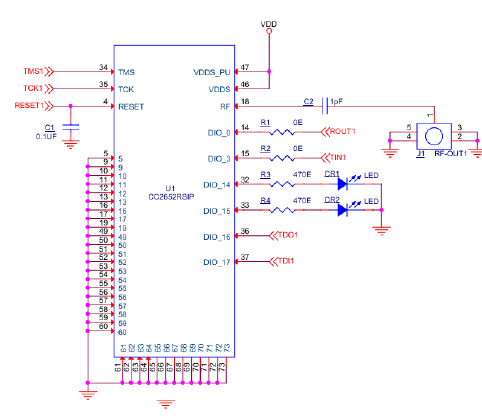Other Parts Discussed in Thread: LP-CC2652PSIP
Tool/software:
We are using the device CC2652RSIP in our application.
We are getting +3 dBm o/p. At RF o/p of the device we connected 1 pf capacitor and SMA connector.
The following is the circuit we used. Whether we can achieve better level than +3dBm.
please suggest. If possible, please share RF circuit design guidelines to be followed for
the device CC2652RSIP and CC2651RSIPA

Thank you.

